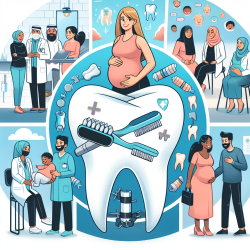Understanding the Research
The research article "Qualitative exploration of barriers and facilitators of dental service utilization of pregnant women: A triangulation approach" provides valuable insights into the challenges faced by pregnant women in accessing dental care. By identifying these barriers and proposing solutions, practitioners can improve their approach to dental care for pregnant women.
Key Findings: Barriers to Dental Care
The study identified several barriers that prevent pregnant women from utilizing dental services:
- Lack of Knowledge and Misbelief: Many pregnant women are unaware of the importance of dental visits during pregnancy, often due to misinformation about the safety of dental procedures.
- Cost of Dental Care: High costs and insufficient insurance coverage deter women from seeking dental services.
- Physiological Changes: Pregnancy-related changes such as nausea and discomfort can make dental visits challenging.
- Fear and Psychological Conditions: Anxiety and fear of dental procedures are common, exacerbated by concerns for fetal safety.
- Time Constraints: Busy schedules and family responsibilities limit the time available for dental visits.
- Dentists’ Unwillingness: Some dentists are hesitant to treat pregnant women due to perceived risks and lack of support.
- Cultural Taboos: Cultural beliefs and taboos can discourage women from seeking dental care.
- Lack of Interprofessional Collaboration: Insufficient cooperation between healthcare providers can hinder comprehensive care.
Proposed Solutions
The study suggests several strategies to improve dental care utilization among pregnant women:
- Provision of Knowledge: Educating pregnant women about the importance and safety of dental care during pregnancy is crucial. This can be achieved through prenatal classes and media campaigns.
- Financial Support: Implementing insurance packages and discounts for pregnant women can alleviate financial barriers.
- Supportive Policies: Developing policies that mandate dental visits during pregnancy and encourage interprofessional collaboration can enhance care delivery.
Implications for Practitioners
Practitioners can play a pivotal role in addressing these barriers by:
- Incorporating oral health education into prenatal care routines.
- Advocating for better insurance coverage and financial support for dental services.
- Fostering collaboration with other healthcare providers to ensure comprehensive care.
By implementing these strategies, practitioners can significantly improve dental service utilization among pregnant women, leading to better health outcomes for both mothers and their children.
To read the original research paper, please follow this link: Qualitative exploration of barriers and facilitators of dental service utilization of pregnant women: A triangulation approach.










